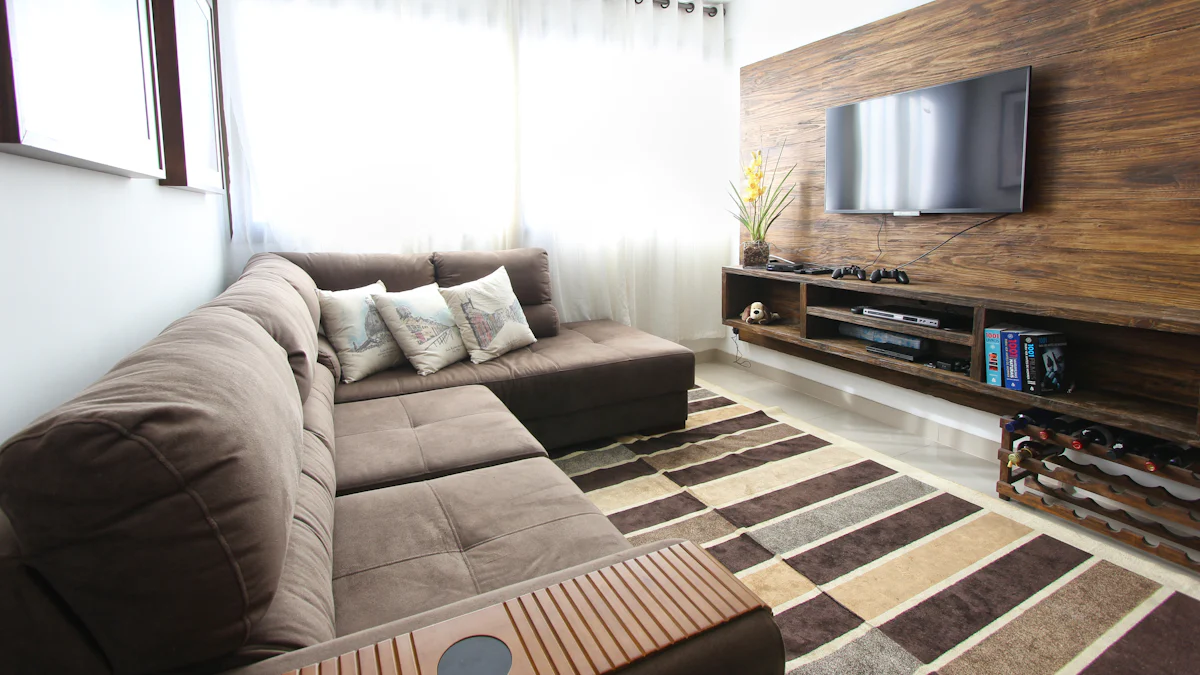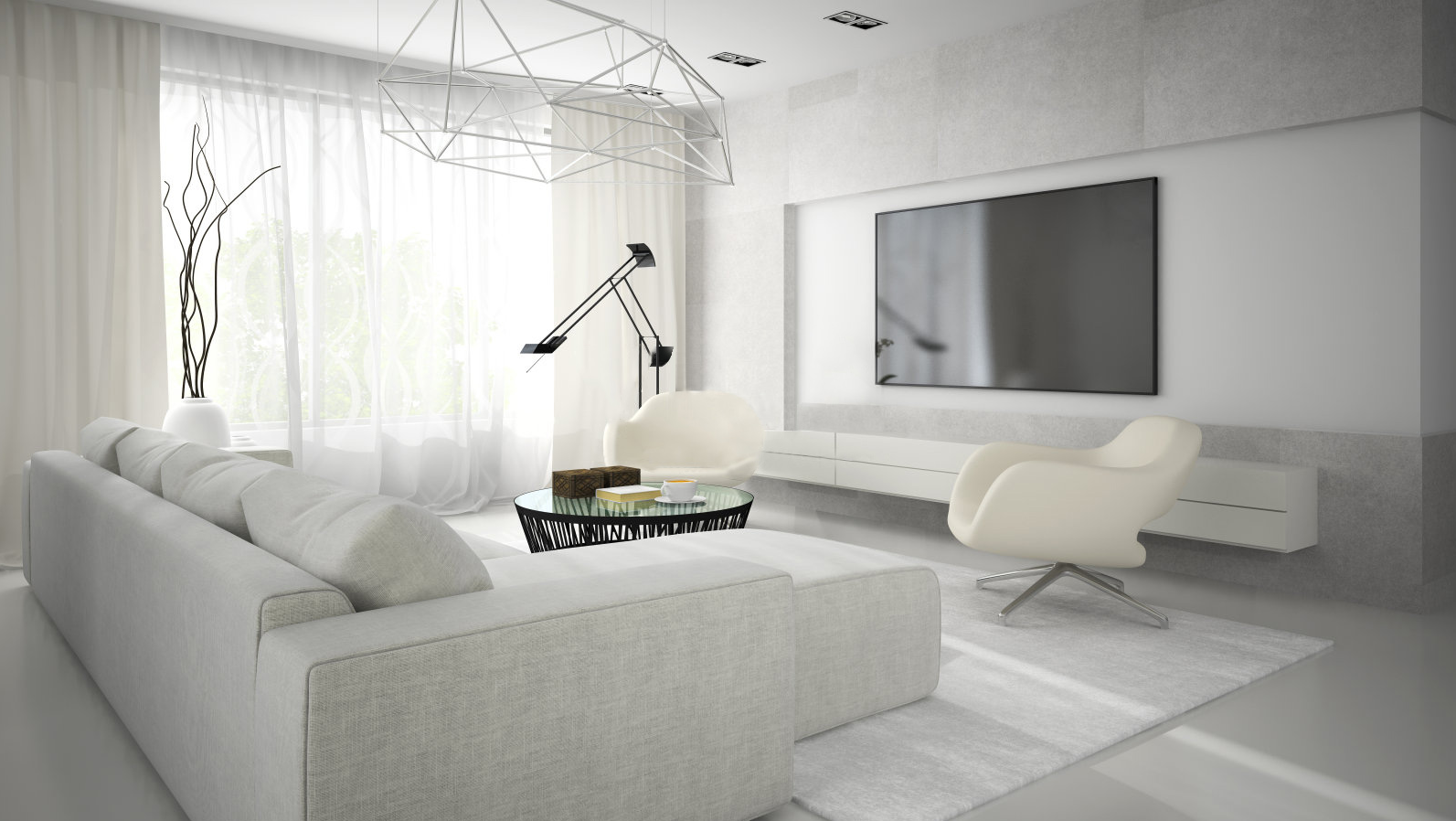A fixed TV mount offers a sleek way to secure your TV while saving space. With fixed TV mounts, your screen stays close to the wall, creating a clean look. To choose the right fixed TV mount, you must consider your TV’s size, weight, and wall type. This ensures a safe and proper fit for your setup.
Key Takeaways
- ● Fixed TV mounts make your TV look neat and tidy.
- ● They keep the TV close to the wall and save space.
- ● Check your TV's size, weight, and VESA pattern to match the mount.
- ● Know your wall type first. It changes the tools you need.
Why Choose Fixed TV Mounts?
Benefits of Fixed TV Mounts
Fixed TV mounts offer several advantages that make them a popular choice for many households. Their slim design keeps your TV close to the wall, creating a clean and modern look. This low-profile setup saves space and eliminates the clutter of bulky stands or furniture. You’ll also find that fixed mounts are sturdy and reliable, providing a secure hold for your TV.
Another benefit is their simplicity. Fixed TV mounts have no moving parts, which means fewer components to worry about. This makes them easier to install and maintain compared to other types of mounts. They also tend to be more affordable, making them a budget-friendly option for mounting your TV.
If you’re looking for a way to improve your viewing experience, fixed mounts can help. By positioning your TV at the right height, you can reduce neck strain and enjoy a more comfortable setup. These mounts are perfect for creating a theater-like experience in your living room or bedroom.
Ideal Scenarios for Fixed TV Mounts
Fixed TV mounts work best in specific situations. If you plan to watch TV from a single location, such as a couch or bed, they are an excellent choice. Since they don’t tilt or swivel, they’re ideal for rooms where the viewing angle doesn’t need adjustment.
These mounts are also great for smaller spaces. Their slim profile allows you to maximize floor space, making them perfect for apartments or rooms with limited square footage. Additionally, fixed TV mounts are a good option if you want a minimalist aesthetic. They keep your TV flush against the wall, giving your space a sleek and uncluttered appearance.
For TVs mounted at eye level, fixed mounts provide the best results. They’re especially useful in rooms where you want a permanent setup without frequent adjustments. Whether it’s a living room, bedroom, or office, fixed TV mounts deliver a practical and stylish solution.
Understanding Wall Types for Fixed TV Mounts

Identifying Your Wall Type (Drywall, Concrete, Brick, etc.)
Before installing a fixed TV mount, you need to identify the type of wall in your home. Most walls fall into one of three categories: drywall, concrete, or brick. Drywall is common in modern homes and feels hollow when tapped. Concrete walls are solid and often found in basements or older buildings. Brick walls, on the other hand, have a rough texture and are typically used for fireplaces or exterior walls. Knowing your wall type helps you choose the right tools and hardware for a secure installation.
How Wall Type Affects Installation
Your wall type plays a major role in how you install a fixed TV mount. Drywall requires you to locate studs for proper support since it cannot hold heavy weight on its own. Concrete and brick walls, however, can support more weight but need specialized anchors or screws. If you skip this step, your TV may not stay securely mounted. Each wall type demands a different approach, so understanding yours ensures a safe and stable setup.
Tools and Hardware for Different Wall Types
The tools and hardware you use depend on your wall type. For drywall, you’ll need a stud finder, screws, and a drill. Concrete and brick walls require masonry bits, anchors, and heavy-duty screws. A level is essential for all wall types to ensure your TV is straight. Always double-check the hardware included with your fixed TV mount to confirm it’s compatible with your wall. Using the right tools makes the installation process smoother and safer.
Key Factors When Choosing Fixed TV Mounts
TV Size and Weight Compatibility
Your TV’s size and weight are critical when selecting a fixed TV mount. Every mount has a specific weight limit and screen size range it can support. Check your TV’s specifications, including its weight and diagonal screen measurement, to ensure compatibility. Using a mount that cannot handle your TV’s weight risks damage to both your wall and your television. Manufacturers usually list these details on the packaging or product description, so double-check before making a purchase.
If you own a larger TV, look for mounts designed for heavy-duty use. These mounts often include reinforced materials to provide extra support. For smaller TVs, a standard fixed mount will work well. Matching the mount to your TV’s size and weight ensures a secure and stable setup.
VESA Standards and Why They Matter
The VESA standard is a universal mounting pattern used by most TV manufacturers. It refers to the distance between the mounting holes on the back of your TV, measured in millimeters. Common VESA patterns include 200x200, 400x400, and 600x400. You’ll find this information in your TV’s manual or on the manufacturer’s website.
When choosing a fixed TV mount, confirm that it supports your TV’s VESA pattern. A mismatch can make installation impossible. Many mounts are compatible with multiple VESA sizes, but it’s always better to verify. Understanding VESA standards simplifies the selection process and ensures your TV fits perfectly on the mount.
Measuring for Proper Fit
Accurate measurements are essential for a successful installation. Start by measuring the width and height of your TV. Then, measure the space on your wall where you plan to mount it. This helps you determine if the TV will fit comfortably without obstructing other elements like furniture or windows.
You should also measure the distance between the mounting holes on your TV to confirm compatibility with the mount. Use a tape measure to check the height at which you want to install the TV. Positioning the screen at eye level provides the best viewing experience. Taking these measurements beforehand saves time and prevents mistakes during installation.
Installation Tips for Fixed TV Mounts
Tools Required for Installation
Before you start, gather the necessary tools to make the process smooth. You’ll need a power drill, a stud finder, and a level. A tape measure helps with accurate placement, while a pencil lets you mark the wall. For drywall installations, have screws and a screwdriver ready. If your wall is concrete or brick, use masonry bits and anchors. A socket wrench may also come in handy for tightening bolts. Double-check the hardware included with your mount to ensure compatibility with your wall type.
Step-by-Step Installation Process
- 1. Locate the Studs or Anchors: Use a stud finder to locate studs in drywall. For concrete or brick walls, mark the spots for anchors.
- 2. Mark the Mounting Holes: Hold the mount against the wall and use a pencil to mark where the screws will go.
- 3. Drill Pilot Holes: Drill small holes at the marked spots. This step ensures screws or anchors go in smoothly.
- 4. Attach the Mount to the Wall: Secure the mount using screws or anchors. Use a level to confirm it’s straight.
- 5. Connect the TV to the Mount: Attach the mounting brackets to the back of your TV. Then, lift the TV and hook it onto the wall mount.
Safety Tips for a Secure Mount
Always double-check the weight capacity of your mount. Ensure the screws are tight and the mount is level. If you’re unsure about drilling into your wall, consult a professional. Avoid mounting the TV near heat sources or in areas with high humidity. Regularly inspect the mount to ensure it remains secure over time.
Comparing Fixed TV Mounts to Other Mount Types
Fixed TV Mounts vs. Tilting Mounts
Fixed TV mounts provide a low-profile design, keeping your TV flush against the wall. In contrast, tilting mounts allow you to adjust the vertical angle of your screen. This feature makes tilting mounts ideal for reducing glare or improving viewing angles when the TV is mounted higher than eye level. However, tilting mounts protrude slightly more from the wall due to their adjustable mechanism. If you prioritize a sleek, minimalist look and don’t need angle adjustments, fixed TV mounts are the better choice.
Tilting mounts also require more effort during installation because of their moving parts. Fixed mounts, with their simpler design, are easier to install and maintain. If you want a straightforward solution for a room with consistent lighting and seating arrangements, fixed mounts are the way to go.
Fixed TV Mounts vs. Full-Motion Mounts
Full-motion mounts offer the most flexibility. You can swivel the TV horizontally, tilt it vertically, or even pull it away from the wall. This makes them perfect for large rooms or spaces where you need to adjust the screen for different seating areas. However, full-motion mounts are bulkier and more expensive than fixed TV mounts. They also require more robust installation to handle the added weight and movement.
Fixed TV mounts, on the other hand, excel in simplicity and stability. They are ideal for smaller rooms or spaces where the TV remains in a fixed position. If you don’t need the extra mobility, a fixed mount saves you money and reduces installation complexity.
When Fixed TV Mounts Are the Best Option
Fixed TV mounts work best when you want a clean, streamlined look and don’t need to adjust the TV’s position. They are perfect for rooms with a single, central seating area, such as a living room or bedroom. These mounts also suit spaces where glare isn’t an issue, like rooms with controlled lighting. If you value affordability, ease of installation, and a minimalist aesthetic, fixed TV mounts are the ideal choice.
Tip: Always consider your room layout and viewing habits before choosing a mount. Fixed TV mounts shine in spaces where simplicity and stability are key.
Fixed TV mounts give your space a sleek, modern look while keeping your TV secure. Choosing the right mount becomes simple when you focus on your wall type, TV size, and VESA compatibility. Always follow safety guidelines during installation. A well-installed mount ensures your TV stays stable and enhances your viewing experience.
FAQ
How do I know if my TV is compatible with a fixed mount?
Check your TV’s weight, size, and VESA pattern. Match these details with the mount’s specifications listed on the packaging or product description.
Can I install a fixed TV mount by myself?
Yes, you can. Use the right tools, follow the instructions, and ensure the mount is level. If unsure, ask a professional for help.
What should I do if my wall doesn’t have studs?
Use wall anchors designed for your wall type, such as toggle bolts for drywall or masonry anchors for concrete. These provide the necessary support for your TV.
Post time: Jan-17-2025


